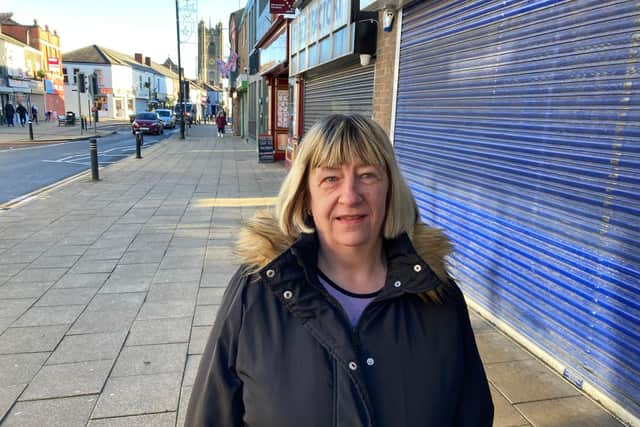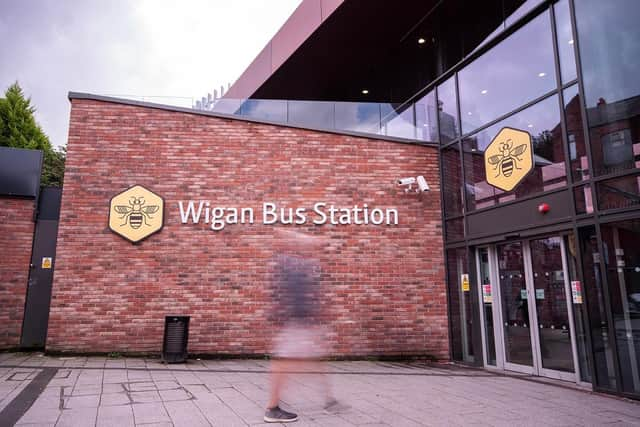Testing out the Bee Network with a bus trip from the centre of Manchester to Standish
and live on Freeview channel 276
On September 24, the bus network came under public control for the first time in decades, with the initial launch involving Bolton, Wigan and parts of Salford.
Although there have been instant benefits to the London-style integrated public transport system, there are still problems to be ironed out.
Advertisement
Hide AdAdvertisement
Hide AdAt a meeting of the Greater Manchester Combined Authority (GMCA) last week, metro mayor Andy Burnham said services are better but still not good enough.


He reported the number of bus passengers in Wigan and Manchester has already increased by eight per cent.
The Bee Network will overtake the remaining bus services in the region by January 2025, with the next phase of the launch due in four months.
It means local authorities set the fares, choose routes and change timetables, rather than privately owned bus operators.


Advertisement
Hide AdAdvertisement
Hide AdTo test out the new buses in the Wigan area, the Local Democracy Reporting Service took a bus ride from Manchester’s city centre to the very edge of the border with Lancashire – Standish.
The one thing that stood out on the off-peak service was that it ran to time.
Google Maps estimated a two hour and 20 minute journey from Portland Street in Manchester to Standish police station on High Street.
Arriving promptly at 10.38am, the Bee Network certainly delivered with its revived V2 service.


Advertisement
Hide AdAdvertisement
Hide AdFollowing the coronavirus lockdown, the V2 – which runs along the Leigh guided busway between Manchester and Atherton – was controversially put on a part-time schedule due to low demand.
Thanks to years of campaigning and the launch of the Bee Network, it finally returned with the same numbers as the V1 – which was not reduced to a part-time service.
The 40-minute journey was a comfortable one with leather high-back chairs and handy USB slots available.
With a lack of traffic (and passengers), the V2 emptied its last customers on Market Street in Atherton before buzzing off on another round.
Advertisement
Hide AdAdvertisement
Hide AdHaving not had a full-time bus service to Manchester for over two years, the 30-minute wait for the 132 bus to Wigan meant there was time to gather the opinions of locals.
One lifelong resident said: “I used it from Bolton to here (Atherton) recently and it was fantastic. We have had more buses now than we’ve had for a while…It’s far more regular now. I would say the Bee Network has been a success so far.
“It has been an irregular service until now as bus operators couldn’t care less (as long as they got their profits). I’ve seen that bus shelter on Market Street packed but no buses come, now there is just one person there and here comes a bus to get them.”
However, that feeling is not shared by everyone, with regular bus user Louise Stones saying more improvements are needed.
Advertisement
Hide AdAdvertisement
Hide AdShe said: “The buses are not reliable, you can get two or three turning up at the same time. The 582 is a popular bus but they don’t seem to be spread out, they are lumped together.
“It was a nightmare at the start of the launch (of the Bee Network) and then it has just got back to how it was before.
“The only thing that has improved is that I feel safer about the fact there is security at the bus stations now.”
Louise was hopeful the service would continue to improve as things develop, after admitting that teething problems will always exist with big changes.
Advertisement
Hide AdAdvertisement
Hide AdIt was almost exactly noon when the 132 bus turned up in Atherton – eight minutes late.
The single-decker was packed as it trundled through Hindley towards the bus station in Wigan.
The luxury of the 132 was not on par with the V2 – it had not even had its yellow makeover, so a seating transformation would be low on the to-do list for Transport for Greater Manchester (TfGM).
After a 30-minute journey, the 132 pulled into Wigan bus station.
Advertisement
Hide AdAdvertisement
Hide AdA quick dash up the station concourse led to the sight of yet another single-decker – but the 362 bus to Chorley was yellow.
Google Maps reported the journey would take 18 minutes to Standish.
The last quarter of an hour flew by and just like that – and two hours and 20 minutes later – three separate buses had travelled from the heart of Manchester more than 24 miles to the edge of Greater Manchester.
Despite this experiment proving that the bus timetable is reliable and punctual, it is still far slower than other methods of transport.
Advertisement
Hide AdAdvertisement
Hide AdTo travel by car the trip would take 40 minutes outside rush hour and just over one hour if you used a combination of trains and buses, according to Google Maps.
With a cost of £6 – three separate £2 singles – it was a fairly reasonable price.
However, the need for signposting bus stop names on the vehicles themselves was clear.
Without knowledge of the local area, it would be hard for passengers to know where to get off without keeping count of their stops and street names not always being clear to the naked eye.
Advertisement
Hide AdAdvertisement
Hide AdThis problem may soon come to an end with plans to drastically improve the Bee Network app by January.
Currently the mobile app can identify how long you have to wait for your bus from a certain stop, but that is where its functions end from a practical sense.
The upgrade is set to feature real-time data allowing passengers to see where their bus is, Mr Burnham said last week. This would be prioritised over a journey planning function which was also set to be introduced.
Customers should be able to pay for tickets on the app using Google or Apple Pay from next month as well.
